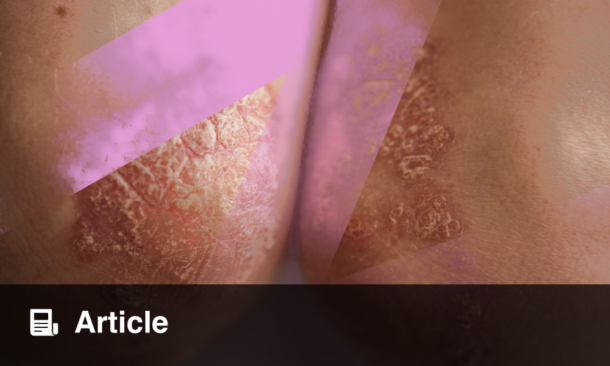THIS YEAR saw the IMCAS World Congress 2025, a landmark event held at the Palais des Congrès in Paris from 30th January–1st February 2025. The congress convened over 20,000 attendees from 140 countries, including a diverse mix of leading medical professionals, researchers, and industry representatives. The growing attendance highlights the position of IMCAS as a premier global gathering focused on dermatology, plastic surgery, and ageing science, providing a crucial platform for education, networking, and the dissemination of innovative ideas.
The Palais des Congrès hosted a substantial exhibition featuring over 370 exhibitors across four levels. This provided attendees with direct access to the latest advancements in medical aesthetics, showcasing innovations ranging from injectables and laser technologies to cosmeceuticals and regenerative medicine. Leading companies presented new products and concepts, while expert-led demonstrations offered practical insights into emerging techniques. The exhibition facilitated professional engagement with cutting-edge technologies, treatments, and medical devices.
From the potential of exosomes in regenerative medicine and the use of AI in diagnosing skin cancer to the complexities of GLP-1 medications for weight loss and the future of body contouring, breast surgery, and breast reconstruction, the IMCAS World Congress 2025 offered unique insights into the latest advancements and challenges in aesthetic medicine.
EXOSOMES
Todd Schlesinger, Epiphany Dermatology, Charleston, South Carolina, USA, provided an excellent summary on exosomes, which are gaining traction in aesthetic medicine due to their cell communication properties, despite their mechanisms not being fully understood. Currently considered cosmetic rather than therapeutic agents due to regulatory hurdles stemming from their varied nature and sources, exosomes hold immense potential for regenerative medicine, according to Schlesinger. In dermatology, they accelerate wound healing post-aesthetic procedures, promote hair follicle growth, and aid in healing chronic wounds. They also influence collagen synthesis and fibroblast proliferation, assisting in scar remodelling. Regulatory challenges, including varying regulations across countries and difficulties in standardisation and production, hinder widespread adoption. However, advancements in bioengineering and AI offer the prospect of engineered exosomes for targeted drug delivery, potentially revolutionising aesthetic medicine.
NON-INVASIVE IMAGING AND AI
Merete Hædersdal, University of Copenhagen, Denmark, highlighted the growing challenges posed by skin cancer, particularly keratinocyte carcinoma, as current diagnostic methods rely on biopsies and histopathology, which can be lengthy and stressful. Hædersdal explained that non-invasive imaging technologies like optical coherence tomography and confocal microscopy, enhanced by AI, offer a promising alternative for rapid, accurate diagnosis. AI algorithms, trained on specific imaging characteristics, show encouraging results in detecting skin lesions, particularly basal cell carcinoma. While not yet replacing clinical judgement, AI is poised to become an indispensable tool for dermatologists, increasing efficiency and precision, according to Hædersdal.
GLP-1: A NEW SOLUTION
Sheher Bano, Pakistan Institute of Medical Sciences, Islamabad, Pakistan, delved into GLP-1 medications, initially for Type 2 diabetes, which are now used for weight loss, raising questions about their long-term efficacy and safety. While offering rapid weight loss and cardiovascular benefits for obese patients, GLP-1 can cause unwanted side effects like facial and buttock fat loss, creating aesthetic concerns. Thorough pre-evaluation is crucial due to potential risks like pancreatitis and gallbladder pathologies, and discontinuation may lead to rapid weight regain, and long-term effects require further research. While effective for medical weight loss, “comfort prescriptions” for aesthetic purposes raise concerns.
LIFE-CHANGING ADVANCEMENTS IN BREAST SURGERY
Emmanuel Delay, French Society of Plastic, Reconstructive and Aesthetic Surgery, Courbevoie, France, explored the evolution of breast surgery beyond aesthetics, as it can now offer transformative physical and psychological benefits. In reconstruction, techniques like lipomodelling and reduced-scar muscle flaps provide personalised, natural-looking results for patients post-mastectomy or with deformities. Combined approaches, such as composite reconstruction, further refine standards, while preventive bilateral surgeries are also available for patients with genetic mutations. Aesthetically, composite augmentation is popular, while techniques like aesthetic lipomodeling remain underutilised. Breast reductions significantly improve the quality of life for women suffering from related pain or distress, and innovation drives the field, with Delay explaining how new methods like the short-scar dorsal flap and microsurgery expand possibilities for cancer reconstruction, congenital malformations, and complex cases.
PROGRESS IN BREAST RECONSTRUCTION
Thomas Rappl, Medical University of Graz, Austria, highlighted the demand for breast reconstruction largely driven by the prevalence of breast cancer. Three main reconstruction techniques exist: implants, lipofilling, and autologous flaps. Implants are widely used but have a 20% complication rate, though innovations are improving them. Lipofilling, using the patient’s fat, achieves natural results but requires sufficient fat and multiple procedures. Autologous flaps, the gold standard, offer durable, harmonious results but are complex, and recent advances focus on minimising complications through lighter implants and specialised surfaces, while lipofilling enhances aesthetic outcomes. Challenges persist, including unpredictable fat resorption and regulatory restrictions hindering access to innovations.
TARGETED TREATMENT OF VITILIGO
Torello Lotti, University of Rome, Italy, provided great insights into how translational medicine can help advance healthcare by bridging laboratory discoveries and patient care. Lotti explained that a new saliva test assessing redox balance and body pH could offer personalised healthcare possibilities. By measuring these imbalances, particularly relevant in psoriasis treatment, therapies can be adjusted. This test provides rapid insights into redox status and pH, enabling tailored recommendations for supplements, treatments, and lifestyle. However, the conventional view of antioxidants as universally beneficial is being challenged, with research highlighting potential harms from excessive consumption, particularly in cancer treatment.
BIOHACKING AND REGENERATIVE MEDICINE
Carlos Wambier, Brown Dermatology, Providence, Rhode Island, USA, explored the concept of biohacking, which offers an innovative approach to slowing ageing by combining advanced medical techniques and lifestyle changes. This rapidly evolving field explores technologies to detect and reverse age-related biological changes, such as DNA methylation. Wambier explained that regional dermatology practices vary, with USA-based plastic surgeons adopting biohacking concepts and Brazilian dermatologists prioritising preventive anti-ageing approaches. Emerging treatments include plant-derived ingredients and medications like metformin and sirolimus, alongside research into immunobiological targeting of TNF-α and IL-23. Stimulating autophagy through intermittent fasting, dietary changes, and sleep management also shows promise. Future regenerative medicine perspectives include complete tissue regeneration via stem cells and grafts. However, biohacking raises ethical concerns, requiring vigilance and medical supervision for interventions like genetic modifications.
CONCLUSION
IMCAS World Congress 2025 successfully united a global community of professionals dedicated to advancing dermatology, plastic surgery, and ageing science. From exploring the latest cosmeceutical trends, balancing “natural” claims with scientific understanding, to navigating the evolving landscape of medical practice in the age of social media, the congress addressed key challenges and opportunities in the field. Discussions ranged from innovative treatments like exosomes and targeted vitiligo therapies to the future of body contouring and breast reconstruction, highlighting the constant pursuit of safer, more personalised, and effective solutions. The event’s combination of high-quality scientific content, industry engagement, and networking opportunities underscored its status as a premier international medical congress. As medical aesthetics continues to evolve, IMCAS remains at the forefront, driving knowledge exchange and innovation in this dynamic field, fostering collaboration and shaping the future of patient care.







